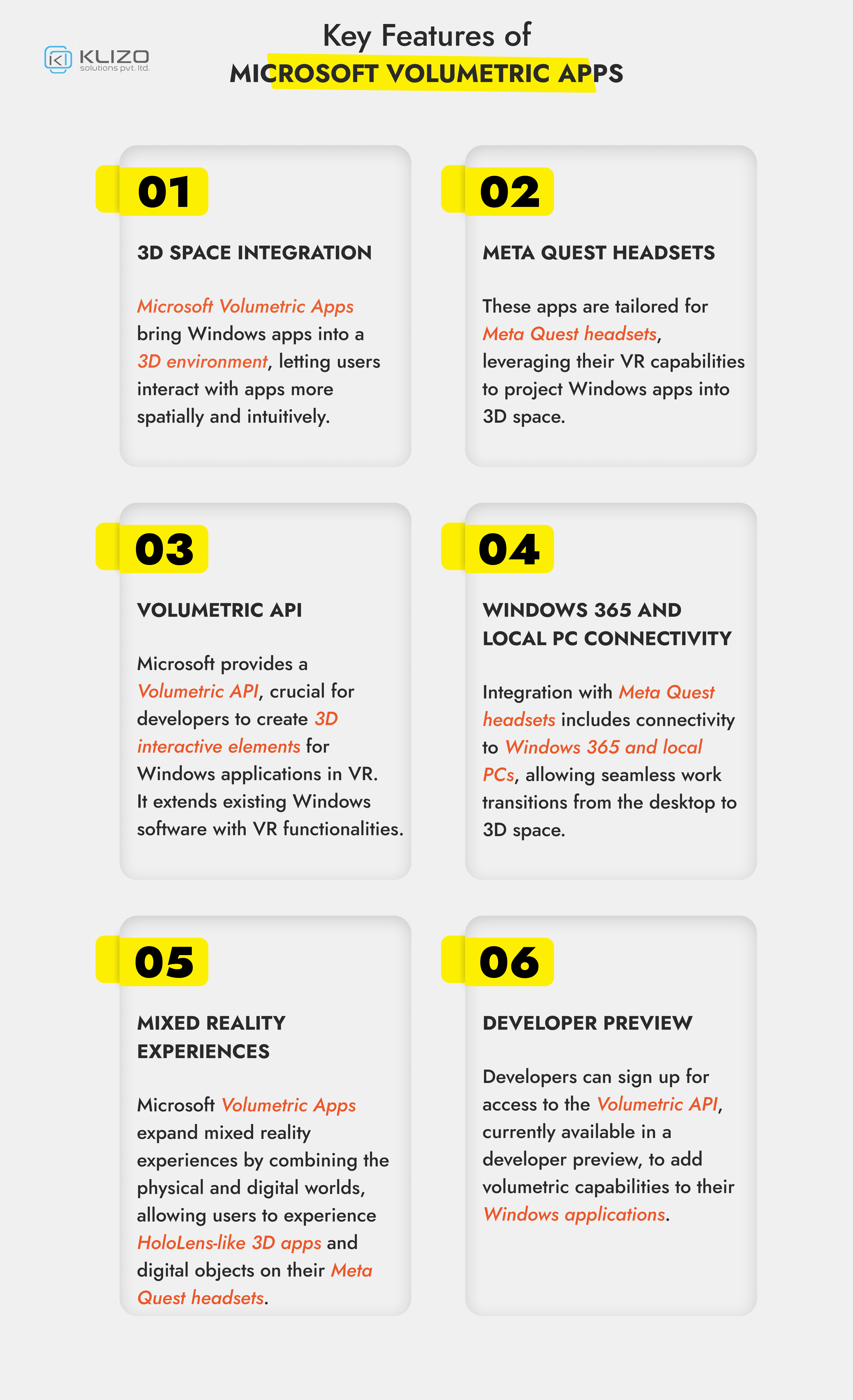


We all know how Microsoft continues to push the boundaries of innovation! And guess what! At its recent Build 2024 conference, Microsoft unveiled a groundbreaking development: Windows Volumetric Apps or Microsoft Volumetric Apps.
Heralding a new chapter in digital interaction, the Microsoft Volumetric Apps are not just an upgrade; they are a transformation, extending the functionality of traditional Windows applications into the immersive realm of 3D space.
Imagine manipulating a 3D model of an Xbox controller with the mere flick of your fingers, no longer confined to the flatlands of your screen. Well, this is not a scene from a sci-fi movie but a reality made possible by Microsoft’s innovative venture into volumetric technology.
In today’s article, let’s explore this new frontier in computing that leverages the power of 3D space to transform traditional applications, promising a more immersive and interactive user experience.
From delving deeper into how the Microsoft Volumetric Apps work to their potential applications, what this means for the future of digital interaction, and so much more!
So without any further ado, let’s jump in!
Microsoft Volumetric Apps are applications designed to operate within a 3D space, providing users with an immersive and interactive experience.
Unlike traditional 2D apps, confined to flat screens, volumetric apps leverage the capabilities of devices like the Meta Quest headsets through Meta Quest Integration to project applications into three dimensions. This allows users to interact with applications more naturally and engagingly, making tasks such as data visualization, virtual meetings, and design work more intuitive and efficient.

The technology behind Microsoft Volumetric Apps is quite fascinating. It’s a blend of XR Technology and 3D modeling that extends traditional Windows applications into the immersive 3D space
At the core of the Microsoft Volumetric Apps is advanced 3D rendering and spatial computing technology. This technology utilizes the hardware capabilities of Meta Quest Integration through Meta Quest headsets, including spatial tracking and hand gesture interaction, to create a seamless 3D experience.
Windows 365 Cloud PC, Microsoft’s cloud-based operating system, plays a crucial role by enabling the integration of volumetric apps with the broader Windows ecosystem.
This connectivity ensures that users can access their familiar applications and data within a volumetric environment, maintaining productivity while enjoying the benefits of 3D interaction.
The introduction of Microsoft Volumetric Apps or Windows Volumetric Apps is set to transform a variety of industries by enabling new ways to interact with digital content in a 3D space. Here are some sectors that stand to benefit significantly:
These use cases illustrate the versatility of Microsoft Volumetric Apps and their potential to revolutionize various industries by bringing a new dimension to digital interaction.

The introduction of Microsoft Volumetric Apps or Windows Volumetric Apps marks the beginning of a new era in computing. This technology signifies a major step towards more immersive and interactive computing, where the lines between the physical and digital worlds continue to blur.
As technology continues to advance, we can expect volumetric apps to become more sophisticated, accessible, and integrated into our daily lives. Yes, Microsoft Volumetric Apps can revolutionize how we interact with technology, making it more natural and akin to real-world interactions.
Innovations in hardware, such as more powerful headsets and improved spatial tracking, will further enhance the capabilities of these applications.
Moreover, as more developers and businesses adopt volumetric apps, the ecosystem will grow, leading to new and exciting use cases that we can only begin to imagine.
Microsoft Build 2024 and the Windows and Meta Partnership highlight the commitment to this technology and its potential to transform how we interact with digital content, making the future of computing more immersive and engaging.
As we conclude our detailed exploration of Microsoft Volumetric Apps, it’s clear that they are more than a fleeting trend; they are a testament to Microsoft’s vision of a spatial computing future, delivering an immersive computing experience.
Setting a new standard for digital object interaction, the integration of 3D space into everyday applications marks a significant leap forward in technology, akin to the innovative strides made by companies like Klizo Solutions. With their expertise in developing custom solutions across various frameworks, including mobile apps and SaaS development, Klizo Solutions exemplifies the kind of forward-thinking approach that complements the advent of volumetric technology.
So, yes, Microsoft Volumetric Apps are a new dimension in technology, waiting for us to explore, innovate, and ultimately, transform our interaction with the digital universe.
As we stand on the brink of this new era, one thing is certain: the future is volumetric, and it is here to stay!
Previous article
Joey Ricard
Klizo Solutions was founded by Joseph Ricard, a serial entrepreneur from America who has spent over ten years working in India, developing innovative tech solutions, building good teams, and admirable processes. And today, he has a team of over 50 super-talented people with him and various high-level technologies developed in multiple frameworks to his credit.

Subscribe to our newsletter to get the latest tech updates.